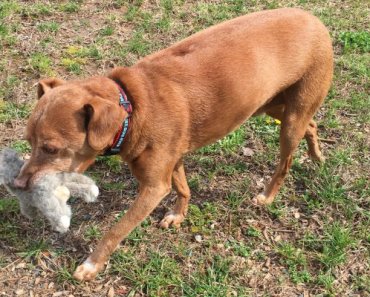Bringing a puppy into your home is an exciting time, but it also comes with challenges, some of which you might not anticipate. Don’t worry! If you already feel like you have taken on more than you can handle, you’re not alone. Millions of people have been in the same boat as you, and they made it through. You can do the same.
Make puppy feel secure
The first couple of nights in a new home can be very strange for a puppy, and it’s important that she feels secure enough to sleep. Set up a crate or enclosed area next to your bed to reassure your puppy she is not alone. Adding a cuddly toy or warm hot water bottle close to her while she sleeps will help. To begin with, it’s likely that your pup will need to toilet at least once during the night, so be ready to get up briefly and take her to her pad or to toilet outside.
Related: Letting Your Puppy Sleep in Your Bed? Here’s How to Do It Safely
Nighttime outings will decrease as she begins to sleep through the night. You can have your puppy sleep in bed with you, but be careful that you wake up before she has an accident. Once she
is sleeping through the night you can move her to a permanent sleeping area if appropriate.
Introduce your puppy to experiences she is likely to have in her life, but don’t overwhelm her. Too much human attention at this stage could teach her to avoid people as she grows, so schedule visits appropriately. Getting your puppy used to being touched by different people, though, is very important, because it builds a bond and enables you, your family, the veterinarian, groomer or doggie daycare worker to handle her safely.
You can also teach your puppy to cope with uncomfortable situations she is likely to experience throughout her life, such as strangers coming up to greet her, wearing a muzzle or having a surgical collar placed around her neck. These might seem odd things to practice so early, but it’s essential for building resilience and helping your puppy cope better when she is faced with these situations in the future.
If you don’t have a muzzle, teach your pup to put her mouth into a plastic party cup, by spreading some peanut butter or cheese at the end of it so she has to put her muzzle inside to lick the food out. This allows her to experience what it’s like to have her mouth confined for a moment, something that
can be very scary for dogs if they have never experienced that feeling before.

Photo: AndreaObzerova | Getty Images
Ease stranger danger
Human greeting behavior can also be threatening, but build up your pup’s tolerance to being touched by strangers by doing the following:
- Stand in front of your puppy. Lean over her and as you do so, praise her and give her a piece of food.
- Keep repeating this action until your puppy is relaxed with you leaning over her.
- As you lean forward and give her food, take your other hand and pet her on the top of the head.
- Keep praising her and telling her what a good girl she is.
- Repeat this exercise a few times as long as your pup is comfortable. If at any time your puppy looks uncomfortable, stop and go back to the level she was comfortable with, and build up again slowly.
- If your puppy accepts this movement, gradually increase distance by walking away, turning around, walking toward her, bending down and touching her on the head.
- Once she accepts this approach, repeat the exercise while talking and smiling at your puppy.
- Add a bit more energy and enthusiasm into your greeting, exactly like a well-meaning person does when greeting your puppy for the first time.
- Once your puppy accepts your approach, practice with other people she knows before asking friends she hasn’t met to come say hello.
Teach independence
While it’s important that your puppy is able to follow you around (encourage this, as it’s a great foundation for teaching a good recall), make sure there are times when she is separated from you.
Independence training teaches your pup to cope when you are away from home. This might mean you close the door when you are in the bathroom or leave her in the kitchen for a time even when
you’re home. Go on short outings away from the home so she experiences the environment without you being there.
Once your puppy has reached about six months of age she will enter the next phase of her life. You can breathe a small sigh of relief because you survived puppyhood, but don’t relax quite yet. Now you get to enjoy an even greater challenge. Adolescence!
Top photograph: smrm1977 | Getty Images
Read Next: Recipe: Puppy Puddin’ Parfait


























